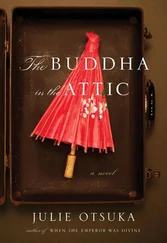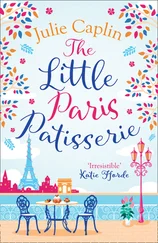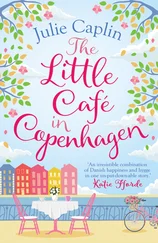Eleven-year-old Klara, flattered by his vision of her future, took him home to her parents’ villa on Benczúr utca. In the sitting room with its salmon-colored sofas, Romankov announced to Klara’s startled mother that her daughter was wasting her time at the studio on Wesselényi utca and must enroll at the Royal Ballet School at once. It was possible that Klara had a brilliant future in ballet, but he must undo the damage that her current teacher had done. He showed Mrs. Hász the mannered curl of Klara’s hand, the exaggerated flatness of her fifth position, the jerky exactitude of her port de bras; then he smoothed her hands into a more childlike curl, made her stand in a looser fifth, took her arms by the wrists and floated them through the positions as though through water. This was how a dancer should look, how she should move. He could train her to do this, and if she excelled she would have a place in the Royal Ballet.
Klara’s mother, who, through an accident of fate and love, had found herself extracted from rural oblivion in Kaba and placed at the center of the most exalted Jewish social circle of Budapest, had never imagined that Klara might someday become a professional dancer; she had imagined lives of ease and comfort for her children. Of course Klara studied ballet, grace being a necessary attribute for young ladies of her social position. But a career as a ballerina was out of the question. She thanked Romankov for his interest and wished him well with his new position at the Royal Ballet School; she would speak to Klara’s father that evening. Once she had sent him away she took Klara upstairs to the nursery and explained to her why she could not study ballet with the nice Russian man. Dancing was a pleasant pastime for a child, not something one did in front of audiences for money. Professional dancers led lives of poverty, deprivation, and exploitation. They rarely married, and when they did, their marriages ended unhappily. When Klara was grown she would be a wife and mother. If she wanted to dance she could give balls for her friends, as her anya and apa did.
Klara nodded and agreed, because she loved her mother. But at eleven years old she already knew she would be a dancer. She’d known it since her brother had taken her to see La Cendrillon at the Operaház when she was five. The next time her governess dropped her off for a dancing lesson at the school on Wesselényi utca, she ran the seven blocks to the Royal Ballet School on Andrássy út and asked one of the dancers there where she might find the tall red-bearded gentleman. The girl took her to a studio at the end of a hallway, where Romankov was just preparing to teach an intermediate lesson. He didn’t seem at all surprised to see Klara; he made a place for her at the practice barre between two other children, and, in his Russian-accented baritone, led them through a series of difficult exercises. At the end of class Klara returned to the other ballet school in time to meet her governess, to whom she mentioned nothing of her adventure. It was three weeks before Klara’s parents discovered her defection from the studio on Wesselényi utca. By then it was too late: Klara had become a devotee of Romankov and the Royal Ballet School. Klara’s indulgent father convinced her mother that there could be no real danger of their daughter’s ending up on the stage; the school was merely a more rigorous version of the one she’d attended before. He’d inquired into Romankov’s professional history, and there could be no denying that the man was an exceptionally gifted teacher. To have his daughter studying under that famous ballet master was an honor that touched Tamás Hász’s sense of bourgeois pride and confirmed his paternal prejudices.
Of the twenty children that comprised the Royal Ballet School’s beginning class, seventeen were girls and three were boys. One of the boys was a tall dark-haired child named Sándor Goldstein. He was the son of a carpenter and had a perpetual smell of fresh-cut wood about him. Romankov had discovered Sándor Goldstein not in a dance class but at the pool at Palatinus Strand, where Goldstein had been practicing acrobatic dives with a group of friends. At twelve years old he could do a handstand on the edge of the board and push himself off, then flip backward to enter the water headfirst. At his school he’d won the gymnastics medal three years in a row. When Romankov proposed taking him on as a student, Goldstein had denounced ballet as a pursuit for girls. Romankov had responded by engaging one of the male dancers of the Hungarian Royal Ballet to meet Goldstein on his way home from school, lift him overhead like a barbell, and run through the streets with him until Goldstein begged to be put down. The next day Goldstein enrolled in Romankov’s beginning class, and by the time he was thirteen and Klara twelve, they were both performing children’s roles with the Royal Ballet.
To Klara, Sándor was brother, friend, co-conspirator. He taught her to send Romankov into a fury by dancing half a beat behind the music. He introduced her to delicacies she’d never tried: the savory dry end of a Debrecen sausage; the crystalline scrapings of the sugared-nuts kettle, which could be bought for half a fillér at the end of the day; the tiny sour apples that were meant for jelly but that made for fine eating if you didn’t eat too many. And at the great market on Vámház körut he taught her how to steal. While Klara showed off pirouettes for the candy vendor, Sándor nicked a handful of peach-pit candy for both of them. He tipped tiny Russian dolls into his cap, looped embroidered kerchiefs onto his smallest finger, plucked pastries from the market baskets of women haggling over fruit and vegetables. Klara invited him to lunch at her parents’ house, where he soon became a favorite. Her father talked to him as though he were a full-grown gentleman, her mother fed him pink-iced chocolates, and her brother dressed him in a military jacket and taught him to shoot imaginary Serbs.
When they had both attained the necessary strength, Romankov made Klara and Sándor dancing partners. He taught Sándor to lift Klara with no sign of effort, to make her seem light as a reed. He taught them to become a single dancer in two bodies, to listen to the rhythm of each other’s breath, the flow of blood in each other’s veins. He made them study anatomy textbooks together and tested them on musculature and bone structure. He took them to see dissections at the medical school. Five times a week they performed with the Royal Ballet. By the time she was thirteen, Klara had been a moth, a sylph, a sugarplum, a member of a swan court, a lady-in-waiting, a mountain stream, a moonbeam, a doe. Her parents had resigned themselves to her appearing on the stage; her growing fame had earned them a certain prestige among their friends. When she turned fourteen and Sándor fifteen they began dancing principal roles, edging out dancers who were four and five years older. Great ballet masters from Paris and Petrograd and London came to see them. They danced for the dispossessed royalty of Europe and for the heirs of French and American fortunes. And amid the confusion of auditions and practices and costume fittings and performances, the inevitable happened: They fell in love.
A year later, in the spring of 1921, it came to the attention of Admiral Miklós Horthy that the star dancers of his kingless kingdom were two Jewish children who had been taught to dance by a White Russian émigré. Of course, no law forbade Jews from becoming dancers; no quota existed in the Royal Ballet Company to mirror the numerus clausus that kept Jews in universities and public positions to a reasonable six percent. But the matter offended Horthy’s sense of nationalism. Hungarian Jews might be Magyarized, but they were not really Hungarian. They might participate in the economic and civic life of the country, but they ought not stand as shining examples of Magyar achievement on the stages of the world. And that was what these children had been asked to do; that was why the minister of culture had brought the matter to Horthy’s attention. They’d been invited to perform in seventeen cities that spring, and had applied for the necessary visas.
Читать дальше












